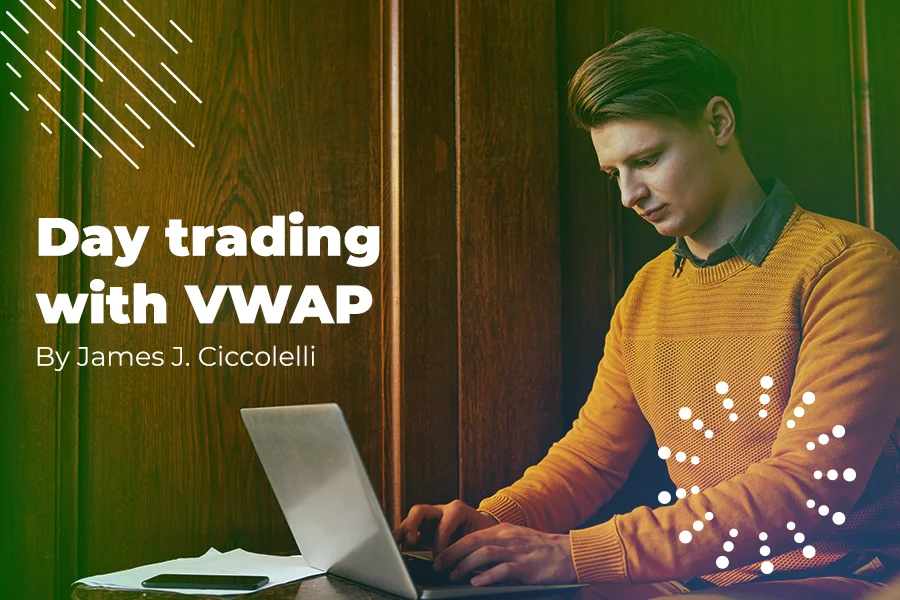Indicators – What are they?
A trading indicator is a tool that takes data such as stock price, volume, etc. and places that data into a mathematical formula. This formula is calculated, and the result is a visual representation displayed as lines directly on the chart for the trader to see. These visual representations allow traders to spot certain types of signals in the chart as well as to identify trends within different timeframes.
Two types of indicators
There are two types of indicators: Leading indicators and lagging indicators. According to Investopedia: “A leading indicator is any measurable or observable variable of interest that predicts a change or movement in another data series, process, trend, or other phenomenon of interest before it occurs.” This pretty much means that a leading indicator is used in attempt to forecast future price action. On the contrary a lagging indicator, according to Investopedia: “is an observable or measurable factor that changes sometime after the economic, financial, or business variable with which it is correlated changes. Lagging indicators confirm trends and changes in trends.” Simply put, a lagging indicator is a historical report of previous conditions that resulted in the current stock price.
VWAP – Volume Weighted Average Price
VWAP, is a lagging indicator used by most day traders within many different strategies. The Corporate Finance Institute states: “The Volume Weighted Average Price (VWAP) is, as the name suggests, the average price of a stock weighted by the total trading volume. The VWAP is used to calculate the average price of a stock over a period of time.” As far as indicators go, VWAP could be considered somewhat basic and easy to understand relative to the multitude of other indicators out there. The mathematical formula used to calculate VWAP is not important to a trader, as it is calculated for us through trading software such as ZeroPro. What we as traders want to see is the result of that formula plotted on our chart. What VWAP allows a day trader to understand is where the current stock price is relative to the average price that all transactions have taken place at on that day. Although VWAP is a lagging indicator, it resets every day. Many traders use VWAP for locating intraday levels of support and resistance. Another noteworthy point is that stocks are commonly understood by traders to have a bullish sentiment when the price is trading above the VWAP, and a bearish sentiment when the price is trading below VWAP.
In the following example of VWAP provided by Tradezero, a trader can use the ZeroPro software to add VWAP (the green line) to their chart. The trader could then see that the volume weighted average price of the stock, GE in this example, for that particular day and time is $67.54 (circled in green.) Given that the current stock price at the time of the screenshot was $67.63 (circled in red), it could be assumed that the stock is currently experiencing a bullish sentiment. A trader could also note that the chart showed VWAP as a clear level of support early in the trading day, circled in blue to the left side of the chart. Respectively later in the day when the stock began to dip off its high of day, the price began to hold and bounce upward almost perfectly off the VWAP line, circled in blue on the right side of the chart. This is just one example of utilizing VWAP as possible support zones.
In Conclusion
The example provided above shows aspiring technical day traders how VWAP could be used to determine whether a particular stock is looking bullish or bearish in the short term. One could also note how, although nothing is ever guaranteed when it comes to using technical indicators, we see in this example how traders can use VWAP as areas of possible support and resistance. If VWAP is an indicator that seems interesting to a trader who is considering technical indicators, there are many more profitable strategies that can be researched and learned to utilize VWAP and add it to your trader’s tool box after learning the basics here today.
Sources:
DISCLAIMER
This content (“Content”) is produced by James J. Ciccolelli. The Content represents only the views and opinions of Mr. Ciccolelli. Mr. Ciccolelli’s trading experiences and accomplishments are unique, and your trading results may vary substantially. TradeZero does not endorse the Content and makes no representations or warranties with respect to the accuracy of the Content or information available through any linked third party sites. The Content has been made available for informational and educational purposes only and should not be considered trading or investment advice or a recommendation as to any security. Trading securities can involve high risk and potential loss of funds. Mr. James J. Ciccolelli’s is compensated by TradeZero for producing the Content and may also receive compensation for customers he introduces to TradeZero.
TradeZero provides self-directed brokerage accounts to customers through its operating affiliates: TradeZero America, Inc., a registered broker-dealer and a member of FINRA and SIPC; TradeZero Inc., a dealer registered with the Securities Commission of the Bahamas; and TradeZero Canada Securities ULC, an IIROC member firm and member of CIPF.
